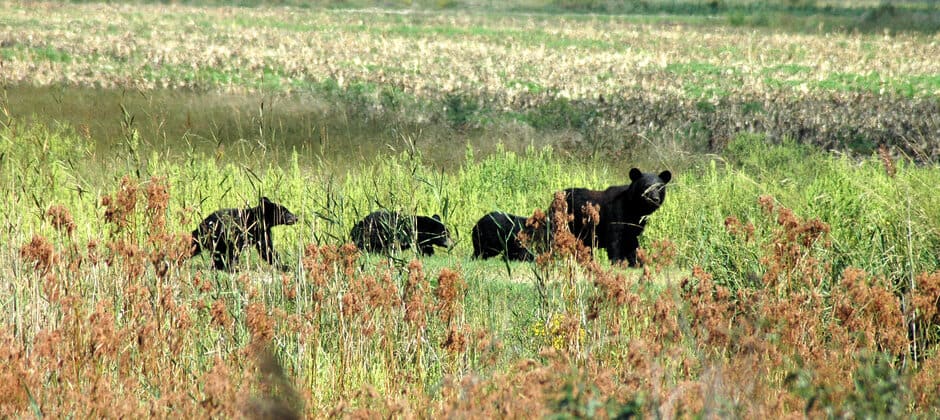Share this article
USFWS approves Pittman-Robertson funds in violation of NEPA
A federal judge has ruled that the U.S. Fish and Wildlife Service violated the National Environmental Policy Act when it allocated federal Pittman-Robertson funds for a multi-year experiment evaluating the effects of predators in Colorado.
In 2016, Colorado Parks and Wildlife officials proposed a program to study the effects of predation on mule deer (Odocoileus hemionus) populations, which have been declining in the state since 2008. The research project involved testing the effects of predator removal on mule deer survival rates. As part of the project, the agency would conduct controlled removal of some black bears (Ursus americanus) and cougars (Puma concolor) in the study area over multiple years. Then, they would compare mule deer survival in these areas to those without predator removal. The agency began implementing the program in 2017.
To support the research, the state agency received some of its funding from the USFWS through the federal Pittman-Robertson Act. The USFWS allocates the act’s funds, which are generated through federal excise taxes on firearms, ammunition and archery equipment, to state agencies for wildlife restoration and hunter education.
In March 2018, a coalition of advocacy groups, including the Center for Biological Diversity, Humane Society of the United States and WildEarth Guardians, filed a lawsuit against the USFWS for failing to follow the National Environmental Policy Act when approving federal funds for the project. Their argument centered on two ideas: The Environmental Assessment of the project’s impacts was insufficient, and the process that the USFWS followed to adopt the assessment was flawed.
Any project funded by federal dollars, like the Colorado project, must follow NEPA rules. That includes evaluating the environmental effects of a proposed action by completing a formal Environmental Assessment. If the EA reveals that the project’s environmental effects would not be significant, then the agency would release a “finding of no significant impact,” often called a FONSI. If the effects would be significant, however, then the agency must complete a more comprehensive Environmental Impact Statement. For both analyses, the agency must make the draft assessment and finding publicly available and open a public comment period prior to finalizing its decision.
At the time that Colorado Parks and Wildlife proposed its experimental program, a separate federal agency, USDA APHIS-Wildlife Services, was preparing a routine EA for its broad wildlife damage management activities in Colorado. The state planned to contract Wildlife Services to perform some of its targeted removal, although the regular activities the agency performed primarily focused on wildlife damages to agriculture and livestock, and not predation on other wildlife. Wildlife Services briefly outlined Colorado’s research proposal in its EA.
After Wildlife Services issued a FONSI and finalized its EA, the USFWS adopted that same document to fulfill NEPA requirements for funding Colorado’s program. Federal agencies can adopt another agency’s EA or EIS if the activities they are proposing are essentially identical. The USFWS finalized the adopted EA and issued a FONSI without opening another public comment period.
In a March 2021 decision, a federal judge ruled that the USFWS should have published a draft EA and opened a public comment period prior to finalizing its decision, which may have provided opportunities to identify and correct any problems with the document. The judge also ruled that the EA was inadequate because the concentrated predator-removal experiment proposed by Colorado differed significantly from Wildlife Services’ broader wildlife damage management activities, and the EA did not evaluate the potential effects of the experiment in enough detail.
The judge vacated the USFWS’ previous FONSI and decision to proceed with funding the project and ordered the agency to conduct a more complete and focused environmental analysis of the program. The decision halts the use of federal funds for the project in one of the two study areas where the work had not yet concluded. The future of the research program, which received 75% of its funds from Pittman-Robertson grants, is not yet clear.
Read TWS’ Position Statements on Wildlife Damage Management and the Use of Science in Policy and Management Decisions.
Header Image: The state of Colorado received Pittman-Robertson dollars to help fund an experiment evaluating the impacts of predators on mule deer. But a court recently found the U.S. Fish and Wildlife Service did not follow the National Environmental Policy Act when it approved the grant funds. Credit: Garry Tucker, USFWS








